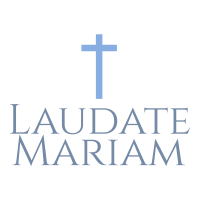St. Benedict of Nursia, born around 480 AD in Italy, is a towering figure in the history of Christianity. Known as the Father of Western Monasticism, his influence on the spiritual, cultural, and educational fabric of Western Europe is profound and lasting. This article explores the life of St. Benedict, his foundational contributions to monasticism, and the enduring legacy of his work.
Early Life and Spiritual Awakening
Benedict was born into a noble Roman family in Nursia, Italy. As a young man, he was sent to Rome to pursue classical education. However, the moral decay and corruption he witnessed there deeply troubled him. Seeking a life of greater spiritual purity, Benedict withdrew from the city around the year 500 AD and sought solitude in the hills of Subiaco.
In Subiaco, Benedict lived as a hermit for three years in a cave, dedicating himself to prayer and ascetic practices. His reputation for holiness and wisdom spread, attracting disciples who sought his guidance. The community that formed around him marked the beginnings of Benedictine monasticism.
Founding of Monte Cassino and the Benedictine Rule
Around 529 AD, Benedict moved to Monte Cassino, where he established a monastery that became the epicenter of his monastic movement. It was here that he composed his seminal work, "The Rule of St. Benedict," a set of guidelines for monastic life that balanced prayer, work, and communal living.
The Rule emphasized stability, obedience, and communal living under an abbot's leadership. It prescribed a balanced schedule of prayer (the Divine Office), manual labor, and study, fostering a disciplined yet humane approach to monastic life. The Rule's practicality and spiritual depth led to its widespread adoption, shaping the course of Western monasticism.
Miracles and Holiness
St. Benedict's life was marked by numerous miracles, attesting to his deep spirituality and divine favor. One of the most famous miracles associated with him is the story of the poisoned bread. When Benedict was abbot of a monastery, some monks, driven by jealousy and resentment, conspired to poison him. They presented him with a loaf of poisoned bread, intending to kill him. However, Benedict, sensing the danger through divine intuition, made the sign of the cross over the bread. As he did so, the loaf crumbled into pieces, rendering the poison harmless. This miracle not only saved his life but also demonstrated the power of faith and divine protection.
Another dramatic miracle occurred when a monk fell into a lake and was at risk of drowning. Despite the efforts of his fellow monks, they were unable to rescue him and rushed to St. Benedict for help. Benedict arrived at the scene and fervently prayed for the monk's safety. Miraculously, the monk was lifted out of the water and brought to shore unharmed. This event highlighted Benedict's role as a protector and his profound connection with the divine, reinforcing the belief in the power of his prayers and intercession.
These stories, along with numerous other accounts of healing and divine intervention, solidified St. Benedict's reputation as a man of great holiness. His miracles were not just acts of supernatural power but also profound expressions of God's love and mercy working through him.
The St. Benedict Medal
One of the most enduring symbols of St. Benedict's legacy is the St. Benedict Medal, a powerful sacramental in the Catholic Church. The origins of the medal date back to the early Benedictine monasteries, where monks used the symbols and inscriptions found on the medal as a means of invoking St. Benedict's protection.
The front of the medal typically features an image of St. Benedict holding the Rule of St. Benedict in one hand and a cross in the other. Surrounding the image are the Latin words "Eius in obitu nostro praesentia muniamur," meaning "May we be strengthened by his presence in the hour of our death." The reverse side of the medal bears the cross of St. Benedict, surrounded by various inscriptions, including "Vade retro Satana" ("Begone, Satan"), a powerful exorcism prayer, and other initials representing Latin prayers of protection.
The St. Benedict Medal is considered a powerful sacramental due to its association with the saint's life of holiness and the numerous miracles attributed to him. It is often used for protection against evil, healing, and as a source of spiritual strength. Believers wear the medal, place it in their homes, or carry it with them to invoke St. Benedict's intercession and protection in their daily lives.
Conclusion
St. Benedict's life and legacy are a testament to the transformative power of faith and discipline. As the Father of Western Monasticism, his influence shaped the spiritual and cultural landscape of Europe, leaving an indelible mark on the history of Christianity. The Rule of St. Benedict continues to guide monastic communities worldwide, offering timeless wisdom and inspiration for those seeking a life of deeper spiritual commitment.
His miracles and the enduring symbol of the St. Benedict Medal remind us of the profound connection between human faith and divine intervention, offering hope and protection to all who seek his intercession. Through his life and works, St. Benedict exemplifies the profound impact that a life dedicated to faith and service can have on the world.
St. Benedict's contributions to monasticism and his enduring legacy serve as a beacon of spiritual and cultural renewal, reminding us of the profound impact that a life dedicated to faith and service can have on the world.

